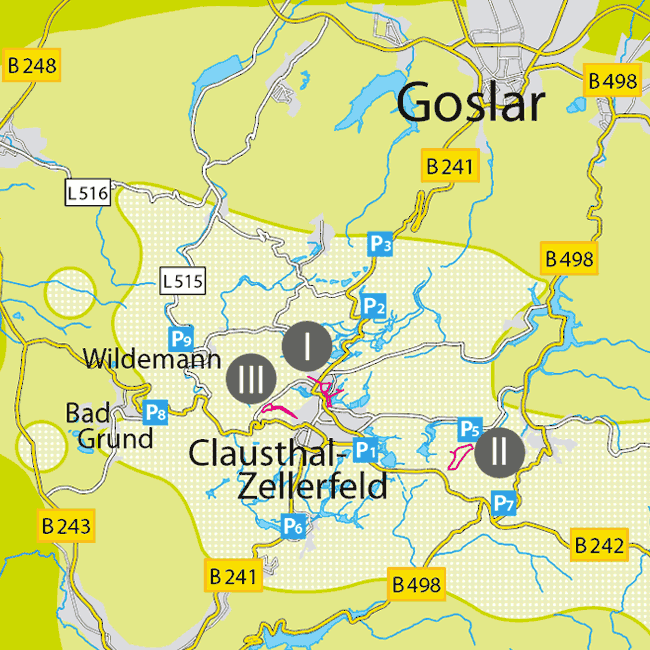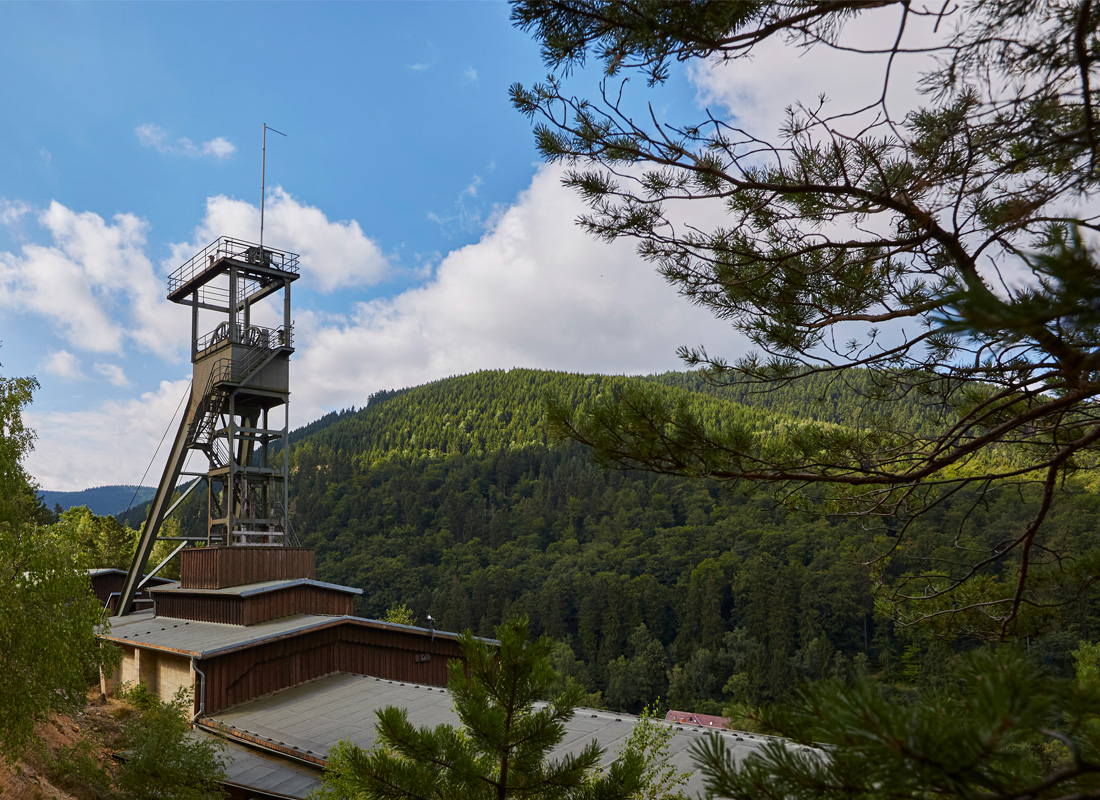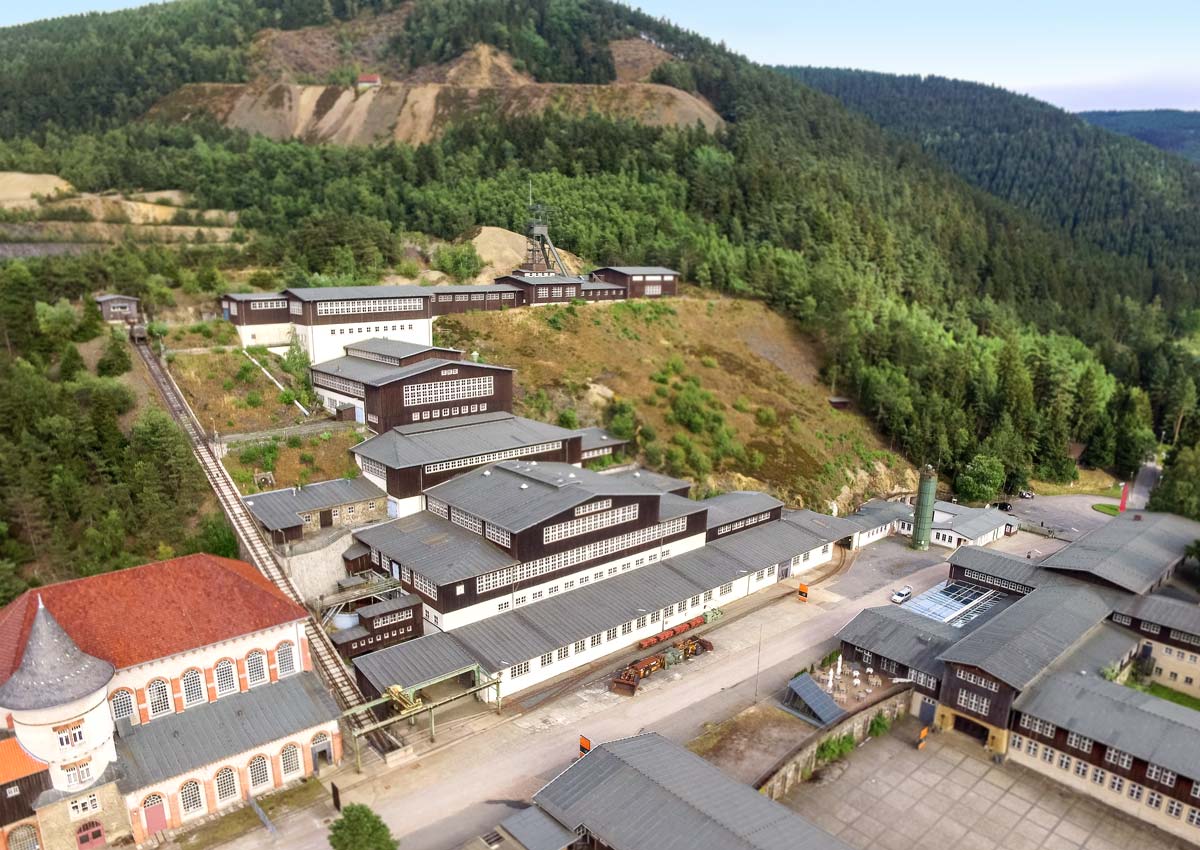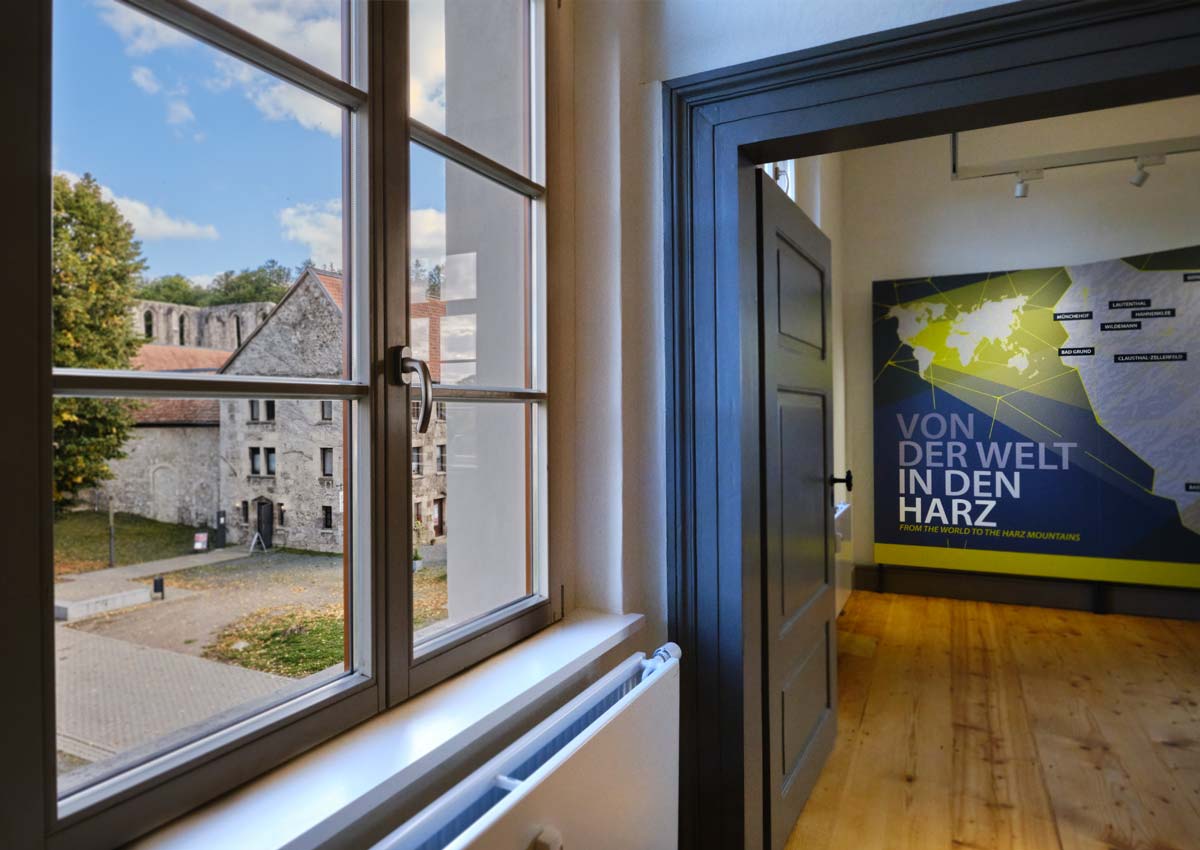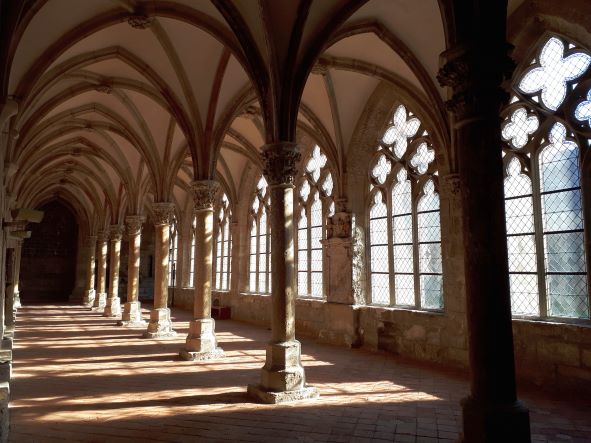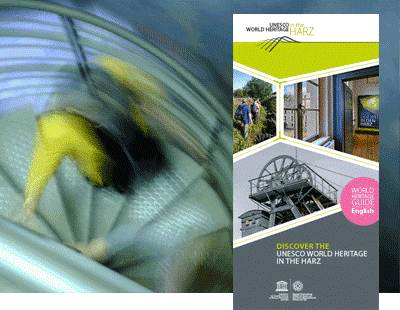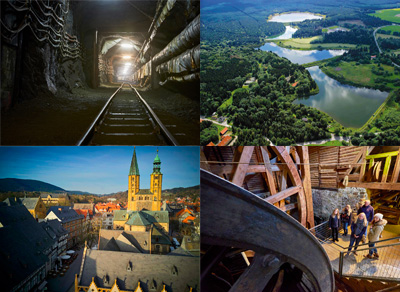The World Heritage Insight Walks –
make new discoveries on foot
Follow in the footsteps of Leibniz from Zellerfeld into the Upper Harz Water Management System, visit the remains of technical installations around the Polsterberger Hubhaus or follow the QR codes into a deep valley near Clausthal-Zellerfeld: with the World Heritage Insight Walks you will find yourself on fascinating tours of discovery.
World Heritage Insight Walk I:
Ideas and Innovations
An easy circular walk from Zellerfeld into the unique World Heritage Upper Harz Water Management System. On this World Heritage Insight Walk there are information stations about the activities of Leibniz.
At first sight, the Harz looks like a large area of untouched nature. But if you look more closely, the landscape created by people becomes visible. Water storage ponds, spruce forests and mining waste heaps are all part of a centuries-old cultural landscape of which individual components today belong to the UNESCO World Heritage Site "Mines of Rammelsberg, Historic Town of Goslar and Upper Harz Water Management System".
This World Heritage Insight Walk will take you on a short circular tour visiting places connected with the activities of the scholar Gottfried Wilhelm Leibniz (*1646 - †1716). He was active in the Upper Harz from 1680 -1686 and 1693 -1696. In various experiments Leibniz attempted to replace or save water as an energy source. Not only the World Heritage in the Harz but also Leibniz's letters are today part of the cultural heritage of UNESCO. They are witnesses of the power of innovation and the creativity of humans.
Duration: around 1:30 h
Difficulty: easy
Length: 3.6 km
Ascent: 43 m Descent: 33 m
Directions and tour details can be found here.
World Heritage Insight Walk II:
Pumps and Water Storage
Discover the energy resource water on this World Heritage Insight Walk. Around what is today the restaurant »Polsterberger Hubhaus«, not far from ClausthalZellerfeld, there is important evidence of many technical installations within a small area, which today are part of the UNESCO World Heritage. The Polsterberger Hubhaus – a pump house – and its operation played an important role.
Water, which was an important energy resource for mining, was brought in from the distant upland moors around the Brocken and on the Bruchberg via the kilometre-long "Dammgraben" ditch system. Using water-driven pumps at the Polsterberger Hubhaus (later electric) the water was pumped 18 metres higher so that it could flow into the storage ponds Hirschler Teich and Jägersbleeker Teich. This was necessary in order to supply the water wheels at the Dorothea and Caroline mines in Clausthal-Zellerfeld, which were rich in silver ore, with enough water to hoist the valuable ore to the surface and to pump out the water seeping into the mines.
A part of this composite energy system can be explored and discovered on foot in the area around the Polsterberger Hubhaus. In addition to the numerous ditches, some of which can only be seen if you take a closer look, there are two old, stone-walled water wheel chambers in this man-made landscape. These were part of the mechanical drive system for the pumps in the Hubhaus. A particular highlight is also the scenic pond Polstertaler Teich, which stored the water that had already been used to drive the pumps in the Hubhaus so that it could provide energy for the ore crushing mills further down the valley.
Tip: You can also be guided by a World Heritage Guide on this walk.
Duration: around 2:00 h
Difficulty: easy
Length: 3.3 km
Ascent: 94 m
Descent: 94 m
Directions and tour details can be found here.
World Heritage Insight Walk III:
Traces of the Past in the Clausthal Valley
An enthralling tour of discovery in Clausthal-Zellerfeld. Experience impressive views, mysterious ruins and important industrial constructions from the past.
This World Heritage Insight Walk will take you on a circular tour on the edge of Clausthal-Zellerfeld from the Ottiliae Shaft to the Rosenhof Wheel Chambers. The ridge "Bremerhöhe", on which the Ottiliae Shaft is located and the valley below it, the "Große Clausthal", were once a huge industrial area. Over the centuries since the town was founded the surrounding landscape has been heavily influenced by mining activities. On this Insight Walk you will find impressive views of a diverse cultural landscape and - via QR codes next to the path - you will obtain interesting insights into their history.
Duration: around 2:00 h
Difficulty: easy
Length: 3.4 km
Ascent: 99 m
Descent: 99 m
Directions and tour details can be found here.
![[Translate to english:] Oderteich (c) Sobotta / Stiftung Welterbe im Harz [Translate to english:] Oderteich (c) Sobotta / Stiftung Welterbe im Harz](/fileadmin/_processed_/a/5/csm_Oderteich__c__Stefan_Sobotta_7f95d5da06.jpg)
World Heritage Insight Walk IV: Hydropower - Then and Now
The Harz is one of the oldest mining areas in Europe. A testament to this history is the Upper Harz Water Management.
It is the largest renewable energy network in the world. Their visible components in the landscape are ponds, ditches and watercourses. Some of them are part of Sankt Andreasberg's water management system.
The Sankt Andreasberg system includes:
• Pit Samson
• Help-God's Pool
• Rehberger Graben
• Oder pond
You can explore them on the World Heritage discovery trail “Water power – then and now”. Some sections of the route are wheelchair accessible. Details can be found in the PDF-Download in german language, which is written in plain language.
You can also find the circular route section around the Help of God pond at Outdooractive. This will lead you to a page in german language.
Walking time: approx. 2:15 hours
Experience time: approx. 3:25 hours
Difficulty: medium
Distance: 10 km
Condition of the path: some sections with inclines are not paved
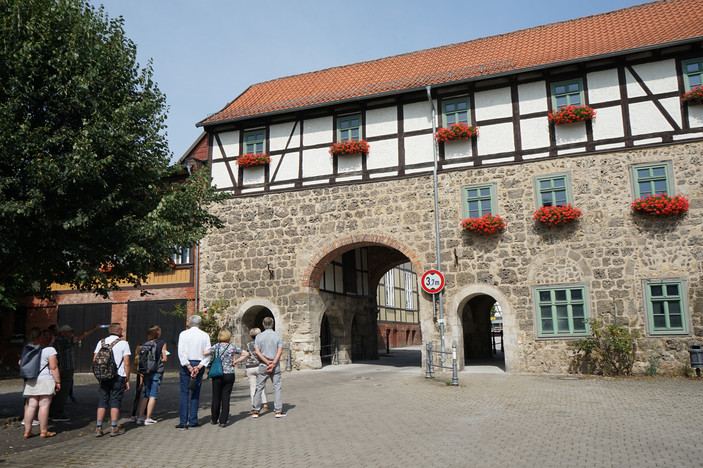
Guided tour on the monastery insight walk
Join us on a guided tour on the monastery insight wlak within the medieval monastery district. Discover the Gothic monastery complex with the impressive church ruins and the completely preserved cloister as well as important historical buildings from the post-monastic period. Learn more about the architecture and history of the old Drostei, the hospital, the gatehouse or the ducal hunting lodge. Other exciting stations of local history await you. The starting point of the tour is the bronze model of the monastery complex on the monastery forecourt.
The guided tour lasts approximately 1.25 hours and costs €10 or €8 reduced. The subsequent visit to the Cistercian Museum is included in the price.
Pre-registration with the visitor service at least one day in advance is required: info@kloster-walkenried.de / 05525 95 99 064. This tour is in german language.
Dates: June 30-2 July, 7-9 July, 14-16 July, 21-23 July, 28-30 July 4-6 August 11-13 August 18-20 August 25-27 August 1-3 Sep 8-10 Sep 15-17 September at 11 a.m

![[Translate to english:] Welterbe-Erkenntnisweg Entdeckungstouren [Translate to english:] Welterbe-Erkenntnisweg Entdeckungstouren](/fileadmin/_processed_/1/9/csm_sobotta_20181010_0716_Lang_2_bearbeitet_5a87bbbe3b.jpg)



